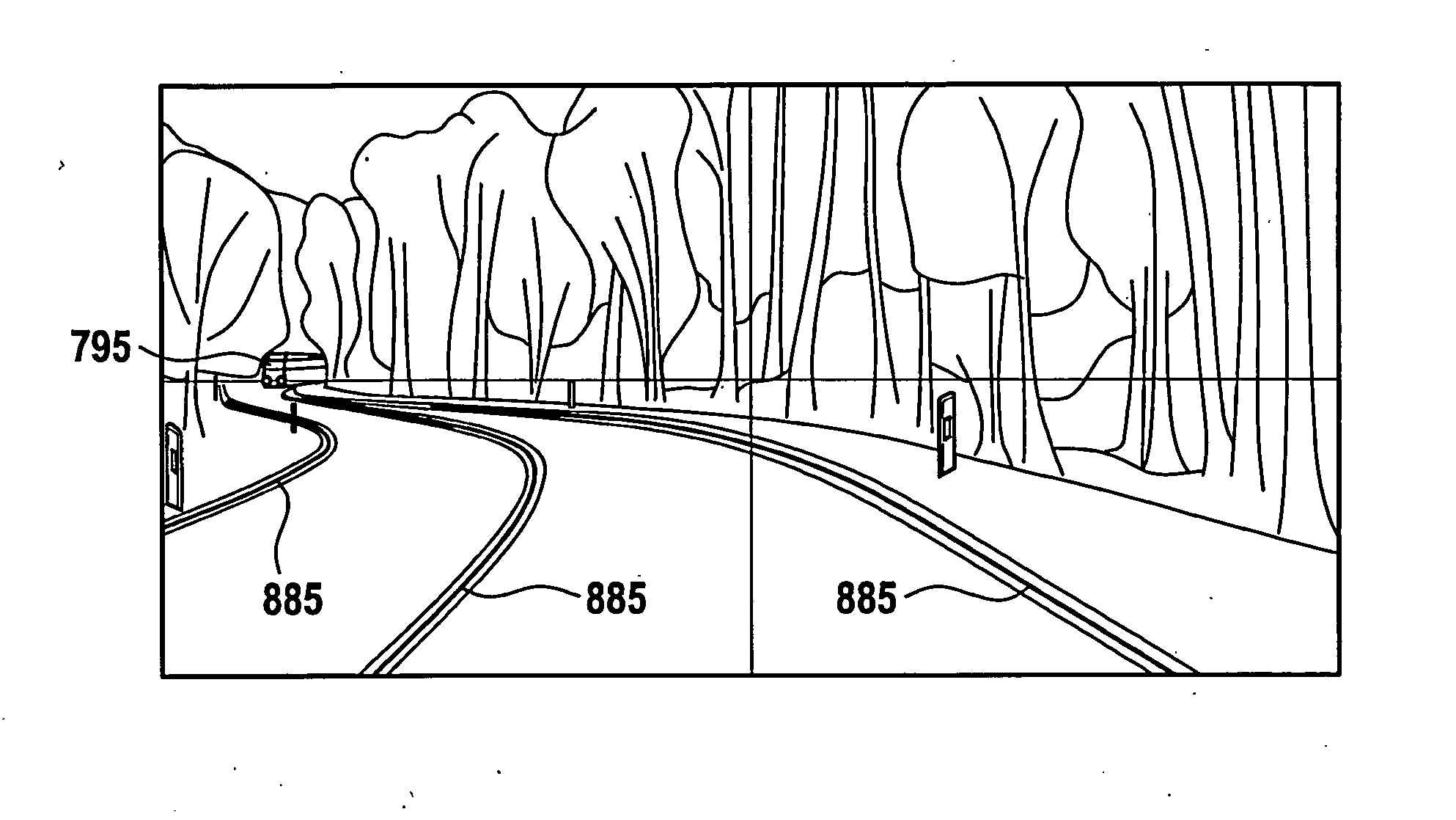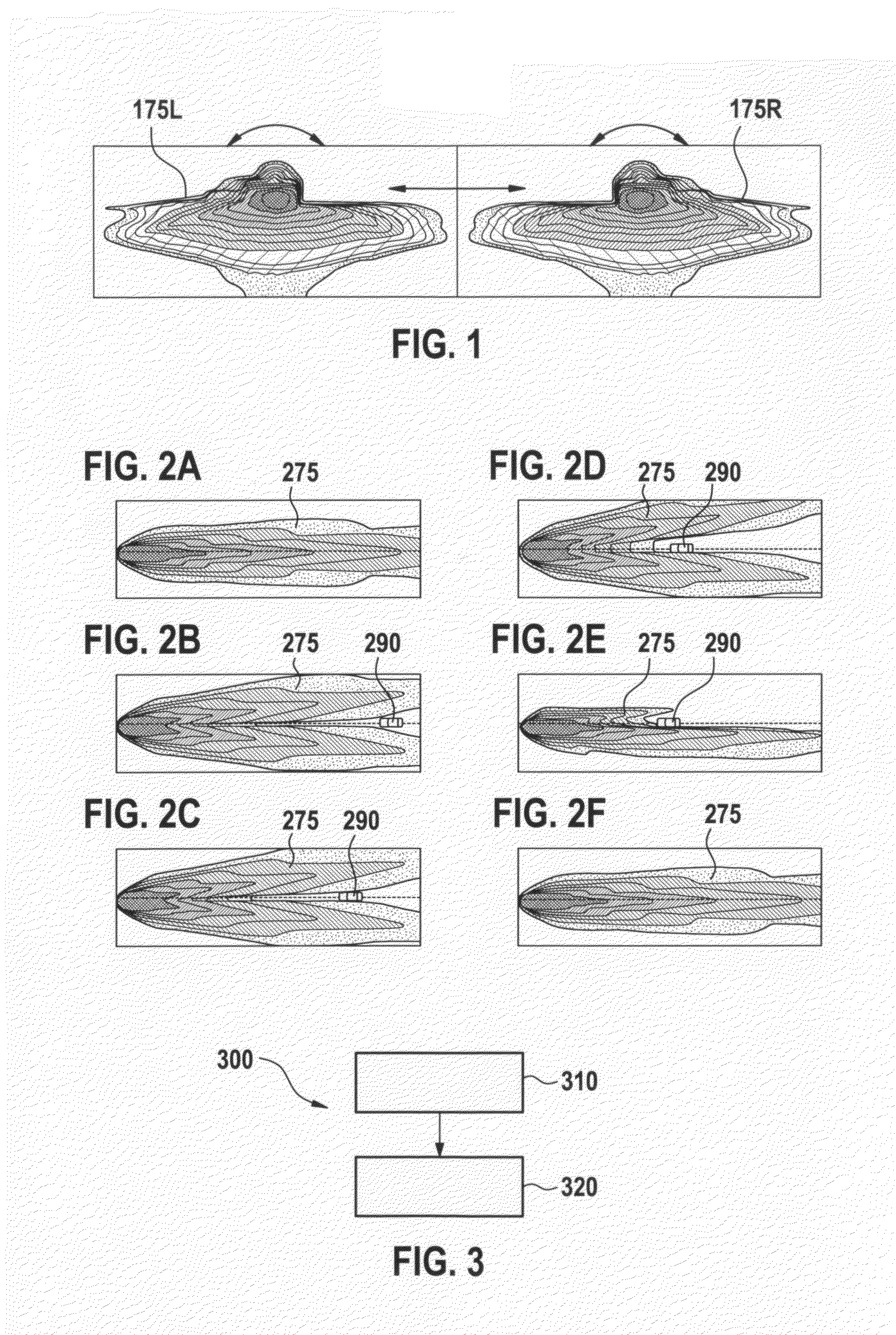Method and device for controlling a light emission from a headlight of a vehicle
a technology for headlights and headlights, which is applied in the direction of lighting support devices, transportation and packaging, lighting and heating devices, etc., can solve the problems of not blinding any other, and achieve the effect of reducing the risk of accidents, ensuring safety, and ensuring safety
- Summary
- Abstract
- Description
- Claims
- Application Information
AI Technical Summary
Benefits of technology
Problems solved by technology
Method used
Image
Examples
Embodiment Construction
[0046]In the following description of preferred exemplary embodiments of the present invention, the same or similar reference numerals are used for the similarly functioning elements shown in the various figures, a repeated description of these elements being omitted.
[0047]FIG. 1 shows a schematic representation of emission characteristics of a pair of vehicle headlights. In particular, FIG. 1 shows one possible realization of a glare-free high beam. Shown are a first emission characteristic 175L or first light distribution pattern and a second emission characteristic 175R or second light distribution pattern. First emission characteristic 175L may be assigned to a first headlight of a vehicle, e.g., a left headlight. Second emission characteristic 175R may be assigned to a second headlight of the vehicle, e.g., a right headlight. Arrows in FIG. 1 indicate areas in which emission characteristics 175L and 175R are modified in such a way that the areas indicated by the arrows are exce...
PUM
 Login to View More
Login to View More Abstract
Description
Claims
Application Information
 Login to View More
Login to View More - R&D
- Intellectual Property
- Life Sciences
- Materials
- Tech Scout
- Unparalleled Data Quality
- Higher Quality Content
- 60% Fewer Hallucinations
Browse by: Latest US Patents, China's latest patents, Technical Efficacy Thesaurus, Application Domain, Technology Topic, Popular Technical Reports.
© 2025 PatSnap. All rights reserved.Legal|Privacy policy|Modern Slavery Act Transparency Statement|Sitemap|About US| Contact US: help@patsnap.com



